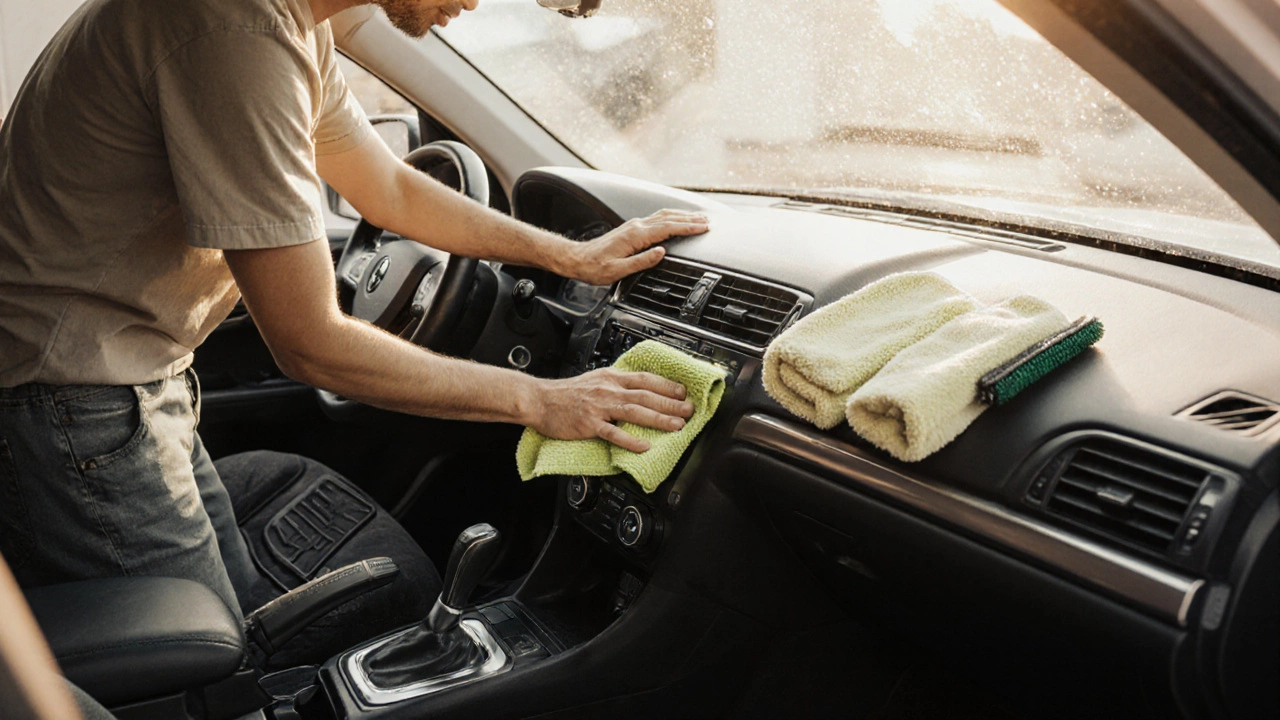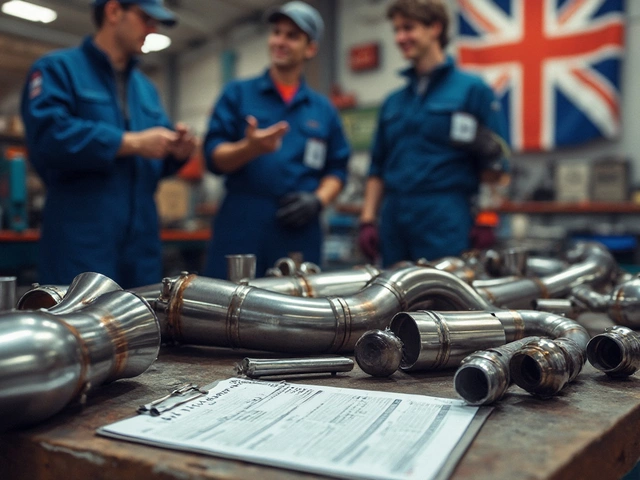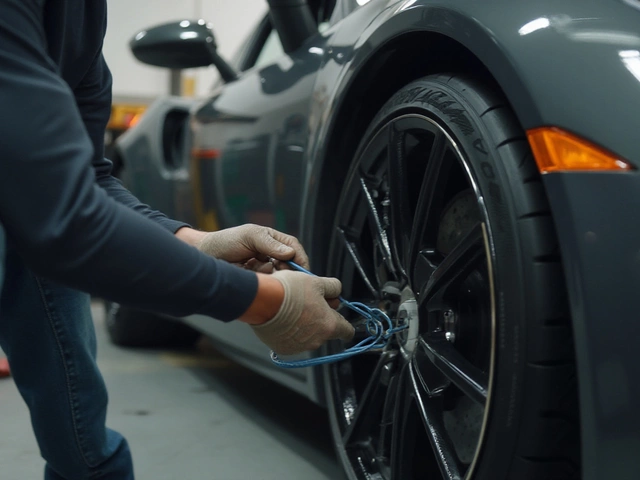Car Interior Cleaner Estimator
Calculate Your Cleaner Amount
Get the right amount for a professional finish without waste
Recommended Amount
Pro Tip: The article advises applying cleaner to a microfiber towel first, not directly on surfaces. This prevents overspray and residue.
How to Apply:
- Step 1: Spray cleaner onto microfiber towel (not surface)
- Step 2: Wipe in small sections using circular motions
- Step 3: Use dry towel to remove moisture
Most people think car detailing means washing the outside, polishing the paint, or cleaning the wheels. But the real game-changer? The interior. A clean, fresh-smelling, scratch-free cabin makes your car feel brand new-even if it’s ten years old. And you don’t need a $500 detailing kit or a professional shop to do it. With the right tools, a little time, and some simple techniques, you can turn your car’s interior into something that looks like it just rolled off the lot.
What You Really Need (No Fluff)
You don’t need ten different sprays and ten brushes. Pro detailers use maybe five tools, and they know exactly how to use them. Here’s what you actually need:
- Two microfiber towels (one for cleaning, one for drying)
- A vacuum with a crevice tool and brush attachment
- A soft-bristle brush (like a toothbrush or dedicated interior brush)
- Interior cleaner (pH-neutral, no silicone or ammonia)
- Leather or vinyl conditioner (if your seats or dash are leather/vinyl)
- Isopropyl alcohol (70% or higher, for sticky spots and disinfecting)
- A small spray bottle (for mixing your own cleaner if you want to save money)
Skip the aerosol sprays that promise "shine"-they leave greasy residue that attracts dust. Skip the cheap wipes that tear apart after one use. Stick to quality microfiber and trusted cleaners. Brands like Chemical Guys, Meguiar’s, or even Simple Green (diluted) work fine. You’re not buying a brand-you’re buying results.
Step 1: Empty Everything Out
Before you even touch a cloth, take out every single thing from your car. Cup holders, glovebox, center console, door pockets, back seat floor-everything. This isn’t optional. You can’t clean properly if you’re working around coffee cups, gym socks, and old parking receipts.
Sort what you take out into three piles: keep, trash, and maybe later. If you haven’t used it in six months, toss it. If it’s broken or smells weird, throw it away. A clean car starts with a clutter-free space.
While you’re at it, check under seats and behind the pedals. That’s where crumbs, dirt, and dead bugs hide. A vacuum with a crevice tool is your best friend here. Run it slowly-don’t rush. Let it suck up every grain of sand and dust.
Step 2: Clean the Dashboard, Center Console, and Trim
Here’s where most people mess up. They spray cleaner directly on the dash and wipe it with a towel. Bad idea. That causes streaks, and worse-it leaves a film that attracts dust faster than before.
Instead:
- Spray your interior cleaner onto a microfiber towel-not the surface.
- Wipe the dash, console, and plastic trim in small sections.
- Use a soft brush to get into vents, buttons, and seams.
- Go over the same area with a dry microfiber towel to remove any leftover moisture.
Why? This prevents overspray from getting into vents or on electronics. It also gives you control. If something’s sticky (like a spilled energy drink on the gear shifter), use a damp towel with a drop of isopropyl alcohol. It dissolves gunk without damaging plastic.
For leather or vinyl surfaces (like the steering wheel or armrests), use a conditioner after cleaning. Apply it with a clean towel, let it soak in for 5 minutes, then buff off the excess. This keeps it soft, prevents cracking, and removes that dry, chalky look.
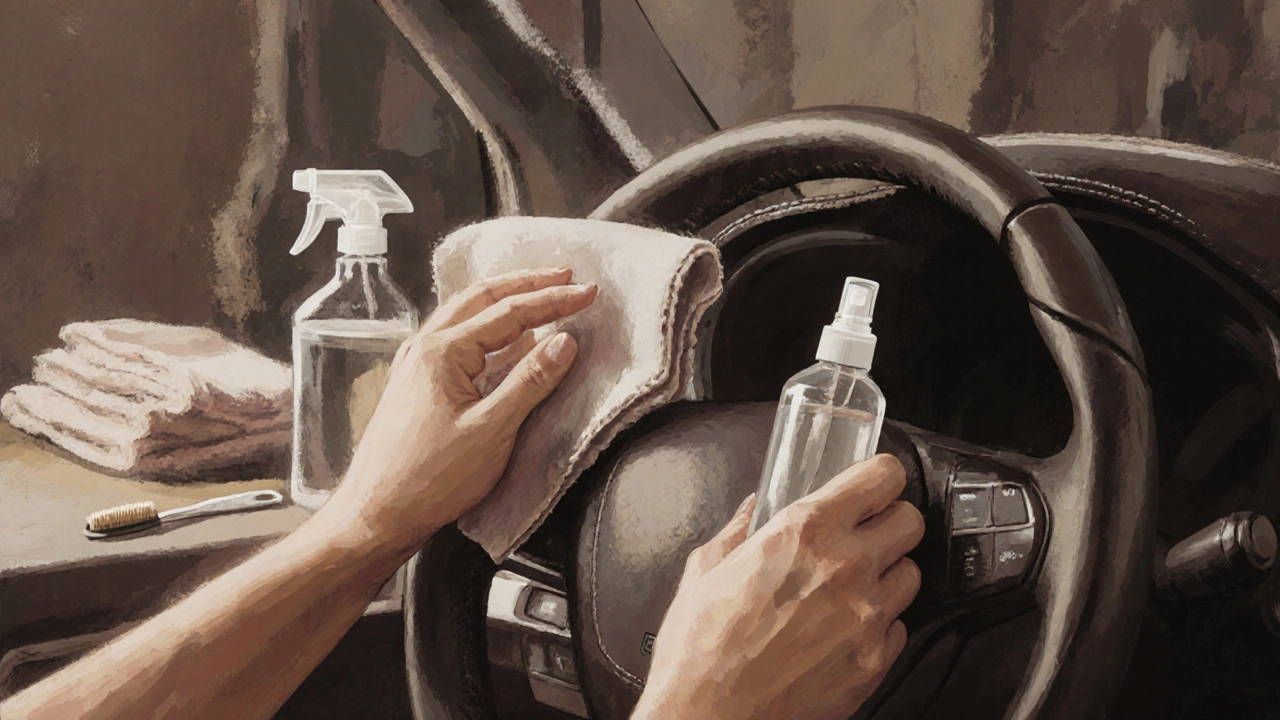
Step 3: Tackle the Seats and Carpets
Seats and carpets take the most abuse. Sweat, food, dirt, rain-your floor and seats are a battlefield. Cleaning them right makes the biggest difference.
For fabric seats:
- Use a brush to loosen embedded dirt before vacuuming.
- Spray a fabric cleaner (like Chemical Guys Fabric Clean) directly on stains.
- Let it sit for 3-5 minutes, then scrub gently with a brush.
- Blot with a towel-don’t rub. Rubbing spreads the stain.
- Use the vacuum’s upholstery attachment to pull out moisture and residue.
For leather seats:
- Wipe with a damp microfiber towel and pH-neutral cleaner.
- Never use saddle soap or household cleaners-they strip oils.
- Condition every 3-4 months to prevent drying and cracking.
For carpets and floor mats:
- Remove floor mats and shake them out outside.
- Use a carpet cleaner or diluted all-purpose cleaner on stubborn stains.
- Scrub with a stiff brush, then blot dry.
- Let them air dry completely before putting them back.
Pro tip: If you’ve got pet hair, use a rubber squeegee. Drag it across fabric or carpet-it pulls hair right off without leaving residue.
Step 4: Clean the Windows and Mirrors
Dirty windows ruin the whole vibe. Even if your seats are spotless, streaky glass makes it look cheap.
Use distilled water and isopropyl alcohol (50/50 mix) in a spray bottle. Spray on the glass, wipe with a clean microfiber towel using vertical strokes on the driver’s side, horizontal on the passenger side. This helps you see where you’ve missed.
Never use paper towels. They leave lint. Never use household glass cleaner-it has ammonia, which can damage tint and plastic trim around the windows.
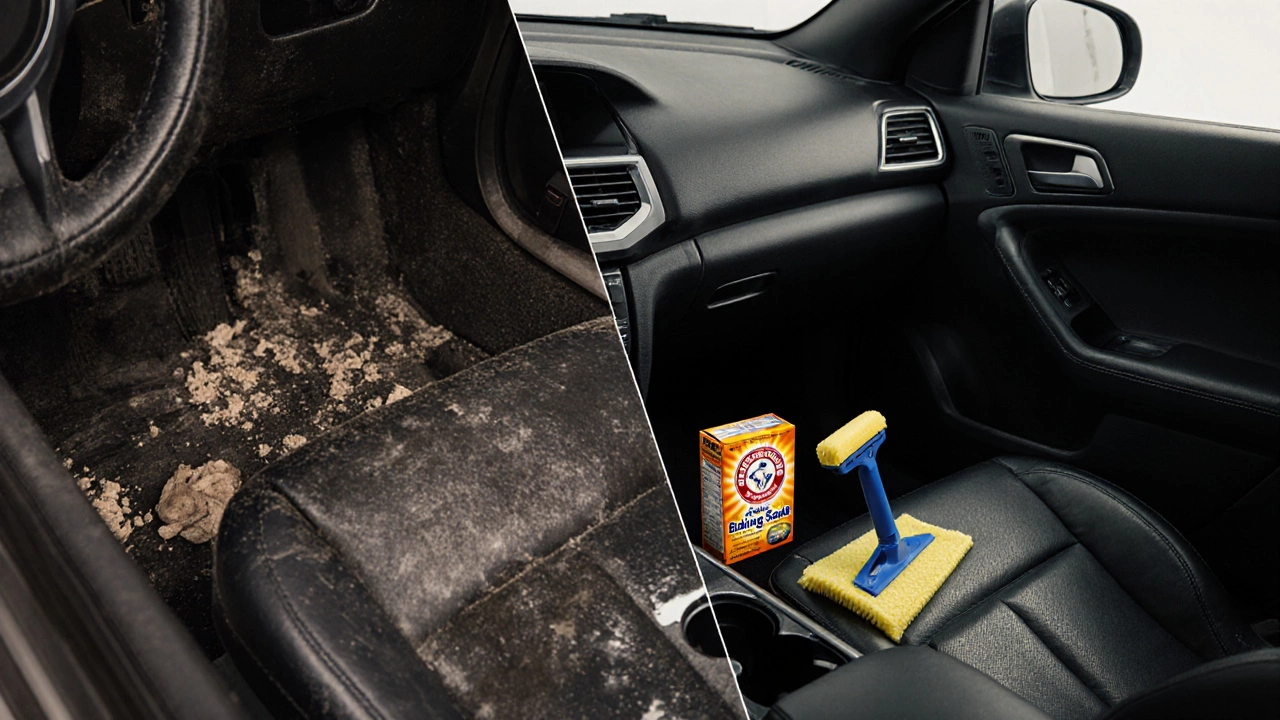
Step 5: Deodorize Without Sprays
That "new car smell"? It’s not from a spray bottle. It’s from clean surfaces and no lingering odors.
Forget air fresheners. They just mask smells. Instead:
- Leave an open box of baking soda in the car overnight.
- Or, place a few activated charcoal bags under the seats.
- Wipe down vents with a damp towel and a drop of vinegar-it kills mold and mildew.
- Run the AC on recirculate for 10 minutes with the heat on high to dry out the evaporator.
If you’ve had spills or wet shoes, treat the area with an enzyme cleaner. It breaks down organic matter at the source, not just covers it up.
Final Touches and Maintenance
Once everything’s clean, do a quick walk-around. Sit in the driver’s seat. Look at the dash. Check the seats. Smell the air. If anything looks dull, smells off, or feels sticky-go back and fix it.
For maintenance:
- Wipe down surfaces with a dry microfiber towel after every trip.
- Remove trash and wet items daily.
- Use floor mats-preferably rubber ones. They catch dirt before it gets into the carpet.
- Deep clean every 2-3 months. Light wipe-downs every week.
People who keep their interiors pristine don’t do big cleanups every six months. They do small, consistent habits. A 5-minute wipe-down after parking your car? That’s the secret.
Common Mistakes to Avoid
- Using Windex or all-purpose cleaners on plastic or leather-they dry it out.
- Spraying cleaner directly on surfaces-it leaves residue and damages electronics.
- Skipping the vacuum under seats and between cushions-dirt builds up fast there.
- Using dirty towels-always use clean microfiber. Reused towels scratch surfaces.
- Waiting until it’s gross to clean it-cleaning regularly takes half the effort.
One more thing: don’t rush. Detailing your interior isn’t a chore-it’s a ritual. Take your time. Listen to music. Enjoy the smell of clean leather. You’re not just cleaning a car-you’re restoring a space you spend hours in every week.
Can I use baby wipes to clean my car interior?
Baby wipes are okay for quick dusting, but they’re not designed for car interiors. They contain lotions and fragrances that can leave a sticky film on plastic and leather over time. For regular cleaning, use a proper interior cleaner. Save baby wipes for emergency spills.
How often should I detail my car interior?
If you drive daily, do a light wipe-down of surfaces once a week. Deep clean every 2-3 months. If you have kids, pets, or commute in dusty areas, aim for monthly deep cleans. The key is consistency-small efforts prevent big messes.
What’s the best way to remove stains from fabric seats?
For fresh stains, blot with a damp cloth and mild soap. For dried or set-in stains, use a fabric cleaner designed for automotive use. Spray it on, let it sit for 5 minutes, then scrub gently with a soft brush. Blot with a clean towel, then vacuum to remove moisture. Never scrub hard-it damages the fabric fibers.
Do I need a steam cleaner for car interiors?
Steam cleaners can be useful for deep sanitizing, especially if you have allergies or pets. But they’re not necessary for most people. A good vacuum, proper cleaner, and microfiber towels will get you 95% of the way. Steam can damage electronics and leather if used too close or too hot.
Why does my dashboard still look dull after cleaning?
Dullness usually means you’re using a cleaner with silicone or wax. These products give a fake shine that fades quickly and attracts dust. Switch to a pH-neutral cleaner and skip the shine sprays. If you want a subtle sheen, use a water-based vinyl or leather conditioner after cleaning-it restores natural oils without the greasy look.

